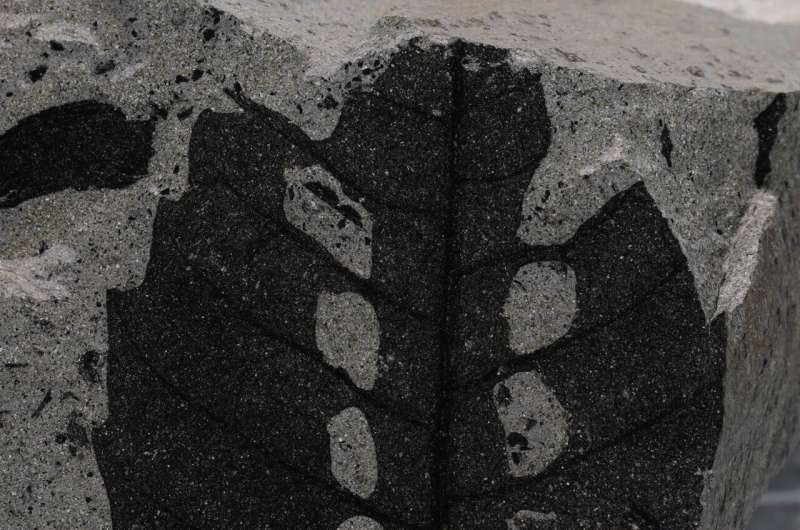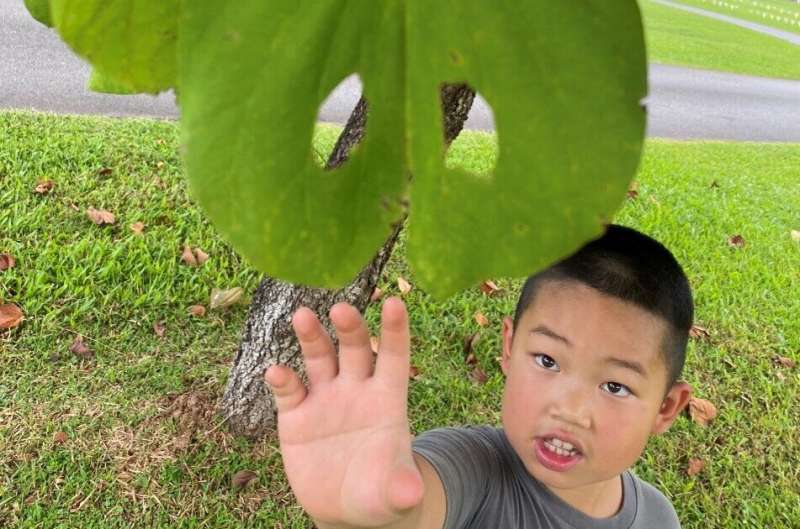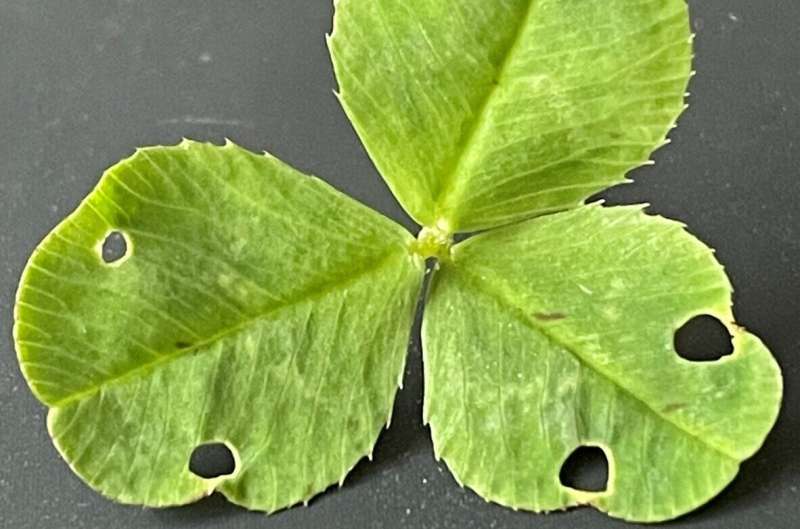This article has been reviewed according to Science X's editorial process and policies. Editors have highlighted the following attributes while ensuring the content's credibility:
fact-checked
peer-reviewed publication
trusted source
proofread
Insect bite marks show first fossil evidence for plants' leaves folding up at night

Plants can move in ways that might surprise you. Some of them even show "sleep movements," folding or raising their leaves each night before opening them again the next day. Now, researchers reporting in the journal Current Biology on February 15 offer the first convincing evidence for these nightly movements, also known as foliar nyctinasty, in fossil plants that lived more than 250 million years ago.
"Our findings reveal extinct plants evolved foliar nyctinastic movements at such an early stage of plant evolution, which is surprising to me," said Zhuo Feng of Yunnan University in Kunming, China.
"Our discovery is based on an unorthodox approach," added Stephen McLoughlin of the Swedish Museum of Natural History in Stockholm. "Since it is impossible to tell whether a folded leaf found in the fossil record was closed because it experienced sleeping behavior or because it shriveled and bent after death, we looked for insect damage patterns that are unique to plants with nyctinastic behavior. We found one group of fossil plants that reveals a very ancient origin for this behavioral strategy."
Feng has had a long interest in fossil plant-insect interactions and their coevolution, finding evidence of insect damage of varying types in the fossil record. In 2013, he discovered an interesting pattern of insect damage in living plants: symmetrical holes punctured through the leaves, which he later realized looked the way they did because insects fed on the leaves while they were folded. As this type of damage is common in nyctinastic plants, he wondered whether he could find it in fossil plants as evidence for sleeping movements.

The study now shows that, indeed, they could. The researchers looked to gigantopterids, an extinct group of seed-producing plants characteristic of the Permian Cathaysian floras from about 300–250 million years ago. They thought these plants were the best place to look because the plants are known to experience frequent attacks from plant-eating (herbivorous) insects. Their broad leaves with robust midvein also make insect damage easy to detect. The first fossil gigantopterid leaf showing the symmetrical pattern they sought turned up in 2016.
"I was surprised by the distinctive pattern of the insect damage and thought it might represent foliar nyctinasty in the fossil plant," Feng said. "But to be sure, I searched for more fossil evidence to reinforce my assumption. The second fossil specimen—a different species of the same plant group—revealed the same insect-feeding damage as that preserved in the leaf collected two years earlier. I then began to think about the scientific significance of the specimens."
He went on to examine hundreds of samples and photos in the Xishuangbanna Tropical Botanical Garden to find even more convincing evidence for nyctinasty. The findings add to understanding of the ecology and evolution of this enigmatic group of plants, according to the researchers.
"In recent years, some [gigantopterids] have been found to possess hooks on their leaves and have specialized water-conducting cells that indicate that at least some were climbers within early rainforest-like ecosystems," McLoughlin said. "To this we can now add that some of these plants folded their leaves on a daily basis. It is now clear that sleeping behavior has evolved independently in various plant groups and at different times in the course of Earth's history, so it must have some ecological benefits to the parent plant."

The findings show that it's possible to infer not just structures but also behavioral characteristics of fossilized plants and animals. The researchers say that biological features of ancient organisms could be deciphered in the future from fossil specimens through further detailed observations of animal interactions with both fossil and modern plants.
"Evidence of fossil insect damage on leaves can provide a great deal more information about plant 'behavior' and ecology than just herbivory," McLoughlin said. "The fossil record of plant-animal interactions is a rich and largely untouched bank of ecological data."
We now know that "the evolutionary history of the 'sleeping movements' of leaves can be traced back to the late Paleozoic gigantopterid plants more than 250 million years ago," Feng said. In future studies, he hopes to explore how many other plant lineages may have had similar behavior.
More information: Zhuo Feng & colleauges, Specialized herbivory in fossil leaves reveals convergent origins of nyctinasty, Current Biology (2023). DOI: 10.1016/j.cub.2022.12.043. www.cell.com/current-biology/f … 0960-9822(22)01980-7
Journal information: Current Biology
Provided by Cell Press




















